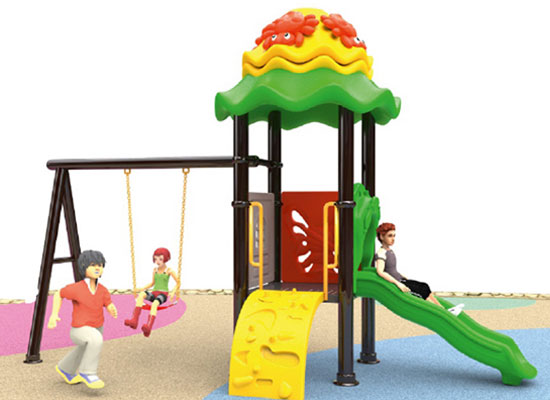
Beyond Fun: Surprising Benefits of Swinging for Children’s Growth and Development
Dr.A.Karuna Kumari (PT)
Did You Know Swinging Is More Than Just Play?
Swinging isn’t just an enjoyable activity—it’s a powerful tool for boosting your child’s physical health, brain development and emotional well-being. While parents often focus on physical fitness, there’s another crucial part of child development we can’t overlook: the sensory system.
Why the Sensory System Matters
The sensory system is how children process and interpret the world around them—through vision, hearing, touch, proprioception (awareness of body position) and most importantly, the vestibular system.
- The vestibular system, located in the inner ear, is the first sensory system to develop and plays a vital role in balance, posture, coordination and spatial awareness.
- It’s often referred to as the “organizer” of sensory input, because it helps children make sense of what they see, hear and feel.
- A healthy vestibular system builds physical security, emotional regulation and even supports cognitive functions like focus, learning and self-regulation.
Good news! One of the simplest and most effective ways to stimulate the vestibular system is by swinging.
Top Benefits of Swinging for Your Child’s Development
-
Stimulates the Sensory System & Improves Postural Control
Swinging provides vestibular input, stimulating the inner ear and helping develop a child’s sense of balance and body awareness. This improves postural control, making it easier for children to sit upright in school, ride a bike and maintain stability during physical activities. -
Strengthens Inner Ear Balance (Vestibular System)
The rocking and rhythmic motion of swinging strengthens the vestibular system. As children experience movement in different directions, speeds and heights, they develop a strong sense of balance, which is essential for daily tasks like walking, running and playing. -
Reduces Anxiety and Promotes Calmness (Anti-Anxiety Benefits)
Swinging has a calming, soothing effect on the nervous system. The repetitive, rhythmic motion can help reduce stress, fear and anxiety in children. It acts as a form of sensory regulation, helping children feel grounded and secure. This is especially beneficial for children with sensory processing challenges or anxiety disorders. -
Enhances Motor Skill Development
Swinging helps children develop gross motor skills such as core strength, coordination and balance. Learning how to pump their legs, hold on tightly and control their body while swinging promotes muscle strength and motor planning (the ability to sequence movements). -
Supports Brain Development and Learning
The vestibular stimulation from swinging boosts brain development, enhancing focus, attention and cognitive function. Studies show that children who engage in regular swinging activities often have improved concentration, which helps with tasks like reading, problem-solving and learning new skills. -
Improves Spatial Awareness and Body Coordination
Swinging improves spatial awareness—the ability to understand where your body is in relation to other objects and people. This is crucial for safe movement, coordination and agility. Spatial awareness developed through swinging helps with activities like climbing, jumping, sports and group play, making children more confident in their movements. -
Encourages Social Interaction and Communication
Swinging is often a shared experience, providing opportunities for socialization with peers and family members. Whether children are taking turns, helping each other swing, or engaging in conversation, they’re building important social skills, including sharing, empathy and cooperation. -
Improves Behavior and Emotional Regulation
Swinging provides vestibular input that regulates the sensory system, helping children stay calm and focused.- It reduces impulsive behaviors, meltdowns and hyperactivity.
- It promotes self-regulation, especially in children with ADHD, sensory processing disorders, or autism.
- Regular swinging can lead to better mood stability and more positive behaviors.
-
Encourages Social Interaction and Communication
Swinging is a great opportunity for social play.- It encourages taking turns, sharing and engaging in conversation with peers.
- This builds empathy, cooperation and friendships, boosting overall social skills.
-
Promotes Longer and Better Sleep
Swinging has a soothing, calming effect on the nervous system, which helps children wind down after a busy day.- The vestibular stimulation helps regulate melatonin production, contributing to improved sleep-wake cycles.
- Children who swing regularly often experience deeper sleep and longer sleep duration, which supports growth, immune function and emotional stability.
The Takeaway: Swinging Is More Than Fun—It’s Essential for Development!
By making swinging a regular part of your child’s playtime, you’re supporting their:
- Balance, postural control and coordination
- Brain development and cognitive function
- Behavioral regulation and emotional well-being
- Spatial awareness and motor skills
- Social interaction and peer bonding
- Better sleep and relaxation
Swing Into Family Fun—And Better Health!
Whether you’re at a public park, amusement park, or enjoying family time in your own backyard, encourage your child to hop on a swing!
At Rainbow Play Equipment manufacturer, we offer safe, eco-friendly and customized swing sets, designed to meet international safety standards.
Give your children the gift of fun, freedom and healthy development—explore our exclusive range today!
We’d Love to Hear From You!
What’s your child’s favorite type of swing?
Share your experience in the comments!
Don’t forget to follow us for more parenting insights on child development, indoor play, outdoor play and family well-being.
References:
- An S. J. (2015). The effects of vestibular stimulation on a child with hypotonic cerebral palsy. Journal of physical therapy science, 27(4), 1279–1282. https://doi.org/10.1589/jpts.27.1279
- Kumar, S. S., Rajagopalan, A., & Mukkadan, J. K. (2016). Vestibular Stimulation for Stress Management in Students. Journal of clinical and diagnostic research : JCDR, 10(2), CC27–CC31. https://doi.org/10.7860/JCDR/2016/17607.7299
